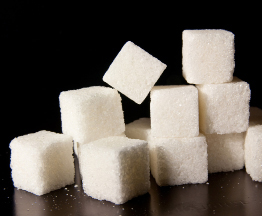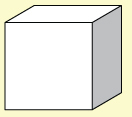Module 5
1. Module 5
1.22. Page 2
Module 5: Angles
Get Started
In this activity you will identify parallel and perpendicular lines in your surroundings, and you will justify your selection.
You will also review definitions, terms, and symbols associated with parallel and perpendicular lines.
 Try This
Try This

iStockphoto/Thinkstock
Work with a partner, if possible. Look at the modern housing units in the following image. Notice the coloured lines drawn over features of the houses. The parallel and perpendicular features are due to the design of the housing units. The blue lines are samples of perpendicular lines, while the red and orange lines are parallel. Can you see more samples of parallel and perpendicular lines in the design?
TT 1. Parallel and perpendicular lines are all around you, as you can see by looking at the photograph of the housing units. Look for some parallel and perpendicular lines in your surroundings. This list shows a few possibilities:
-
edges of a picture frame
-
corners of a room
-
lines on rule paper
-
edges of a ruler
-
tracks left by a car tire
-
railroad tracks and ties
What other parallel and perpendicular lines can you find?
TT 2. Using what you learned in TT 1, write a definition for parallel and perpendicular lines that could be used to sort lines.
Use the two demonstration applets “Parallel Lines” and “Perpendicular Lines” to further study parallel and perpendicular lines. If you need a guide for these applets, review “Help with Parallel Lines” and “Help with Perpendicular Lines.”
TT 3. After using the applets to study lines, revise your definition for parallel lines and perpendicular lines, if necessary.
Save a copy in your course folder.
Using Symbols to Describe Lines

The symbol is ![]() used for “is parallel to.” In the most recent figure,
used for “is parallel to.” In the most recent figure, ![]() is parallel to
is parallel to ![]() You may write
You may write ![]() .
.
Note the symbol ![]() means “line.”
means “line.”
In the parallelogram, PQRS, ![]() . This time the symbol
. This time the symbol ![]() means “line segment”—a part of a line with definite endpoints.
means “line segment”—a part of a line with definite endpoints.

In the diagram, ![]() is perpendicular to
is perpendicular to ![]() The symbol
The symbol ![]() means “is perpendicular to.” You could write
means “is perpendicular to.” You could write ![]() .
.
In the rectangle, PQRS, ![]() .
.
 Try This
Try This
Parallel and perpendicular lines can be a little less obvious in cases from the natural world.

© Oleg Golovnev/shutterstock

© Shebeko/shutterstock
If you have a magnifying glass, the geometry in the following case will be a little easier to see.
Shake a few grains of salt on a dark background. What shape is each grain?
Crystals display one case of geometry in the natural world.
Use your definition of parallel and perpendicular lines from TT 3 to answer the following questions.
TT 4. How many parallel lines are there in a cube? Explain your answer.
TT 5. Where do perpendicular lines occur? How many perpendicular lines are there at those locations?
Save your answers to TT 4 and TT 5 in your course folder. You will be asked to include your answers in the lesson assignment.
Did You Know?
You can grow your own salt crystals quite easily.
The procedure is described in “Grow Your Own Salt Crystals.”
TT 6. Besides crystals, where else in nature can you find parallel and perpendicular lines? Make a list of at least five examples. Support your list with sketches.
In your course folder, save your answer for the lesson assignment.
Every grain of salt is a cube. Enlarged, the salt grain would look much like the following cube.
